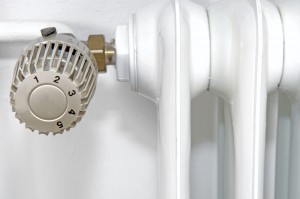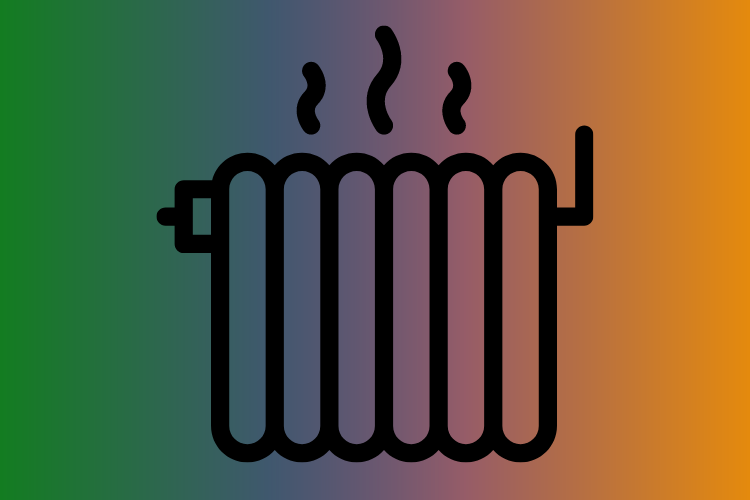There are a few easy fixes for dealing with radiators in your property. Use our guide to get started.
 If you’re finding your central heating isn’t as warm as it might be, then don’t automatically assume that it’s the boiler which is the problem. Sometimes there can be some very easy fixes which you can carry out yourself using simple step-by-step DIY guides, such as ours below.
If you’re finding your central heating isn’t as warm as it might be, then don’t automatically assume that it’s the boiler which is the problem. Sometimes there can be some very easy fixes which you can carry out yourself using simple step-by-step DIY guides, such as ours below.
Often a chilly house is caused by problems with the radiators, and if you can fix the problems yourself, you could have a warm and cosy house in no time, without even having to pay money to a plumber.
Here are the problems we cover below:
- Bleeding radiators
- Removing sludge from a radiator
- Adding a thermostatic value to a radiator
Bleeding Radiators – what does it mean and how do you do it?
Even if you know very little about central heating and radiators, you’ll probably have heard someone talking about bleeding the radiators. Confusingly, bleeding radiators has nothing to do with releasing liquid from the system, exactly the opposite. Central heating systems typically are powered by a boiler, which heats water and circulates the hot water around the system and through the radiators to heat your home. If air gets into the system this can mean that the hot water doesn’t fill the radiators. You can often tell if air is in the system as your radiators will feel cool at the top and warm at the bottom. The process of removing the air from the radiators is known as bleeding. Often, it’s the radiators at the top of the house or furthest from the boiler which have issues with air collecting, so start upstairs and work your way back towards the boiler.
Bleeding the radiators isn’t difficult, and doesn’t require a lot of equipment.
Tools Needed For Bleeding Radiators
To bleed a radiator you’ll need:
- A bucket
- some old towels
- Either a radiator bleed key or a flat headed screwdriver
Step by Step Radiator Bleeding Guide
- Do this job when the central heating is switched off and the radiators are cool to reduce the risk of scalding.
- Look for the bleed valve in one of the top corners of the radiator.
- This will look like a round recess on the side of a radiator with a square inside.
- Pop your radiator bleed key over the square and slowly turn it anti-clockwise.
- A quarter or half turn should be enough to start to release the air.
- When the air starts to escape, you’ll be able to hear the hiss.
- Keep a towel close underneath the bleed key, and as soon as you start to see water trickle from the valve, close it again firmly.
- Work around the rest of the radiators in the house repeating the process.
- After you’ve bled all of the radiators you’ll have to replace the air you’ve removed from the system with water by re-pressurising your boiler.
- If you find that your radiators are needing bled on a regular basis it’s worth calling in a heating engineer as there may be an underlying issue with air getting into the system somewhere.
Removing Sludge from a Radiator
If you have radiators which are warm at the top and cold at the bottom, then the issue might be caused by a build-up of sludge and rust inside the radiators. You can of course call in a plumber or heating engineer to flush through the entire system and boiler; this will cost you between £300 and £400. Never attempt to maintain your boiler yourself as this is a job which is most definitely best left to the professionals. If however you’ve just got one or two radiators which appear to have sludged up, then this is something you can definitely tackle yourself.
Step by Step Radiator Sludge Removal Guide
- Start by switching off the central heating and let the system cool completely.
- Disconnect the radiators from the rest of the system using the valves to shut off the water and then disconnecting the radiator panel. Take the disconnected radiator outside, and use the bleed valve to completely drain it of water, sludge and rust.
- Hose it down.
- Rinse it off.
- Once you are sure that all the sludge has been removed, connect everything back up.
- Ensure there are no leaks or drips before turning the system back on.
How to Add a Thermostatic Valve to Your Radiator
If your issue is that you have a choice between having your radiator on full blast or not on at all, then you probably haven’t got thermostatic valves added to your central heating radiators. These types of valves, often abbreviated to TRV, are the twist valves with numbers on which allow you to graduate the heat coming off the radiators. TRVs allow you to adjust the heating to the perfect level in each room and can also save you considerable sums off your annual heating bill. TRVs are cheap to buy; all major DIY stores will sell them for less than £10, and if you want to splash out further you can buy TRVs with digital displays and other enhanced functions.
Step by Step Thermostatic Valve Fitting Guide
- Drain the system of water completely before you start trying to disconnect valves.
- Loosen the existing valve and catch any drips with an old towel.
- Use a spanner to remove the cap of the old valve.
- Remove the cap of the old valve completely from the end of the pipe.
- Clean up the end of the pipe using wire wool
- Fit the new TRV, using the adaptors and connectors supplied with the kit.
- Make sure you tighten up everything fully.
- Refill the system.
- Switch everything back on.
Know Your Central Heating Limits
The most important thing to remember when dealing with boilers, radiators and anything to do with central heating is that it’s essential to know your limits. If you’re not confident doing DIY in general, then don’t attempt to remove radiators or change valves without expert help. If you think your central heating issues lie with the boiler rather than with the radiators then don’t even think about taking the cover off and trying to sort it yourself.
Fiddling around with gas boilers when you aren’t properly trained could lead to leaks, fires or explosions. If you need your boiler to be serviced or repaired search online for an approved and certified heating engineer close to you, or specialising in your brand of boiler. All people working repairing or installing gas boilers should have the Gas Safe certificate.
